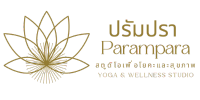Discover the Perfect Yoga Class for You
Are you searching for a yoga class that fits your needs and schedule? Whether you’re a beginner or an experienced yogi, finding the right class in Bangkok can enhance your practice and overall well-being. Here’s what you need to know to choose the perfect yoga class for you. Why Join a Yoga Class? Joining a […]
Discover the Perfect Yoga Class for You Read More »
